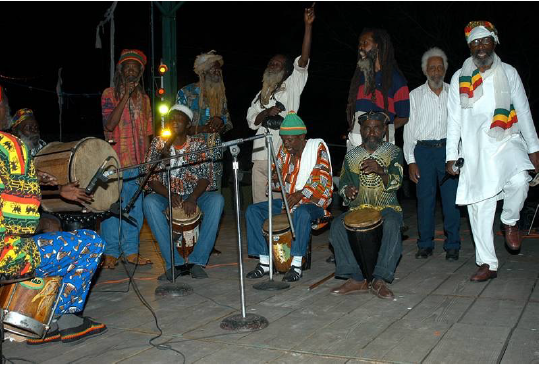Taíno
Over the several hundred years of Jamaica’s recorded history, several groups of people have been acknowledged as having their origins in our island. The Taíno are regarded to have emerged as a distinct ethnic group in the Greater Antilles, firstly in Española and Puerto Rico, then Cuba, Jamaica and the Bahamas. While Taíno language and way of life may have been similar to the Arawak’s, the artefact the Taínos left, their beliefs and mythic tales as recorded, define theirs as a distinct and unique island culture.

Depiction of Taíno playing their ball game called Batu.
Maroons
The Maroon People arose from enslaved groups that escaped to Jamaica’s rugged interior highlands. Taíno and many Africans taken as slaves established several enclaves that for years harassed attempts by the Spanish and English to settle the island. The Maroons were formidable adversaries, unshakable guerrilla warriors. After decades of virtually continuous warfare, in 1728 and 1729 the British Army sought terms for a peace pact with the Windward and Leeward Maroons.

Leonard Parkinson one of the leaders of the Trelawney Town Maroons in the 2nd Maroon War.
Rastafari
Rastafari is a Jamaican religious and socio-political movement, inspired by the coronation of Emperor Haile Selassie I in 1938. Based on their Afrocentric understanding of the Bible and Marcus Garvey’s philosophy, Rastafari brought Africans a new vision of themselves as world leaders. After years of struggle and oppression, Rastafari emerged from the ghettos of Kingston to become a political force. And from Jamaica, largely influenced by their word-sound and culture, Rastafari has had immeasurable global impact.

